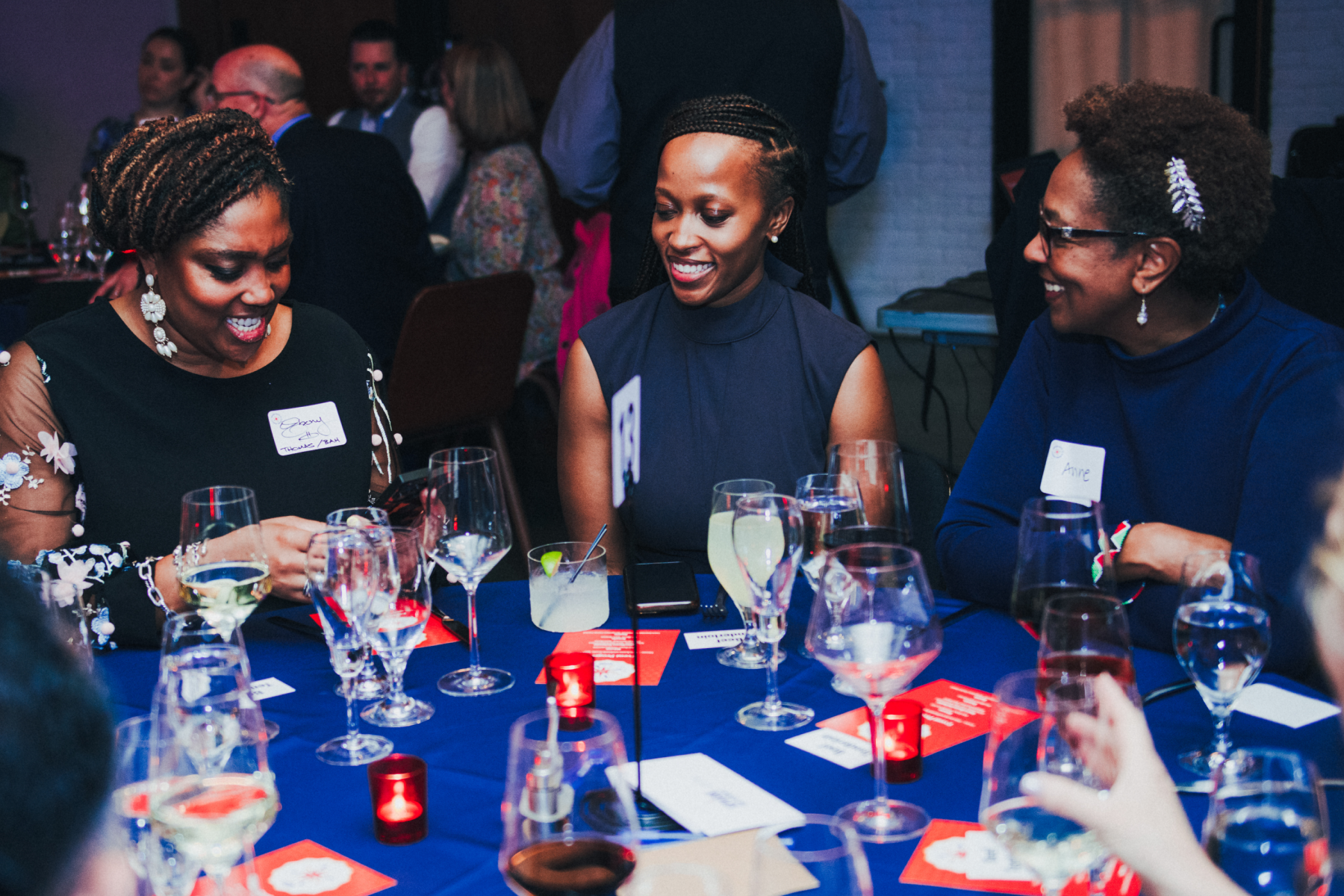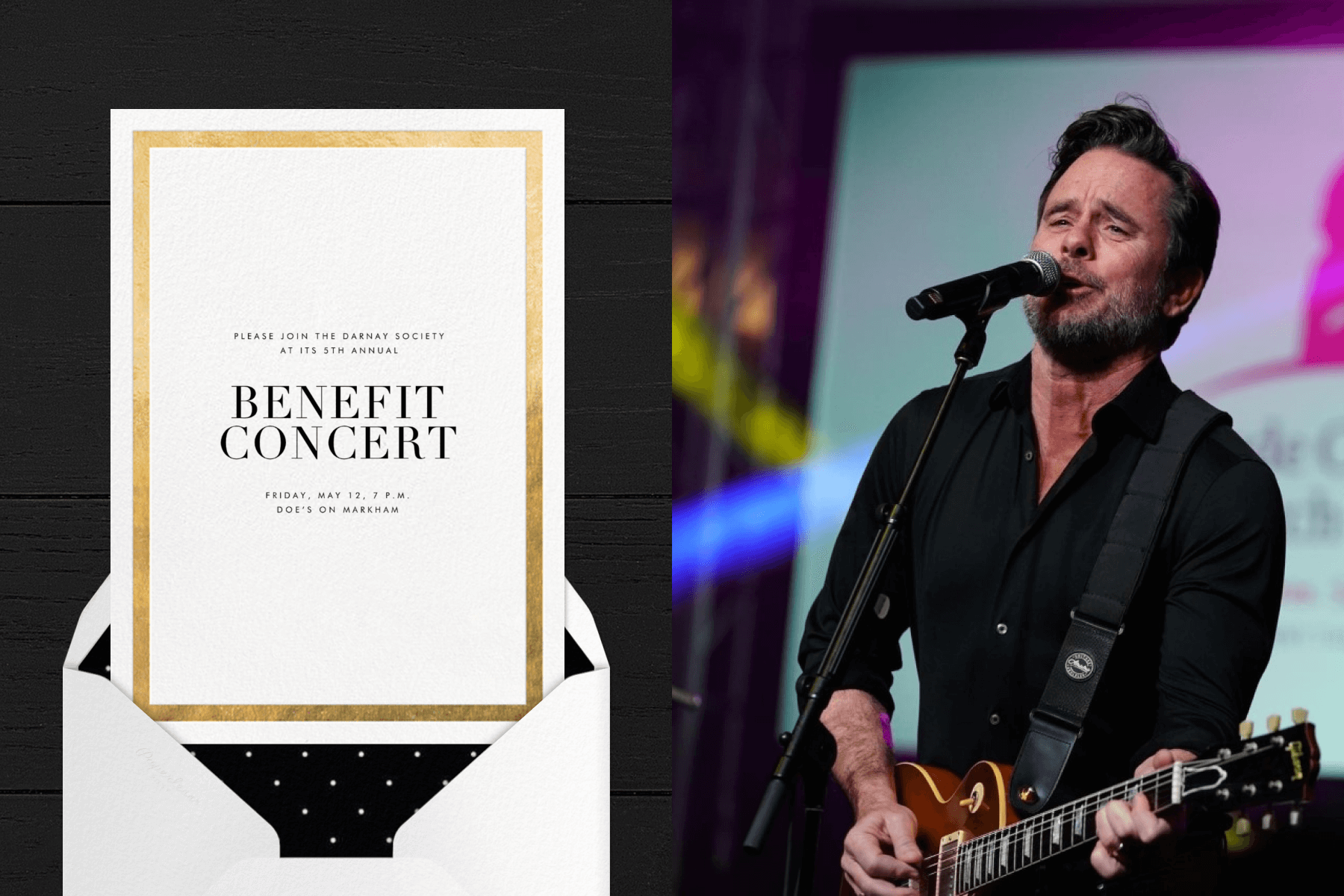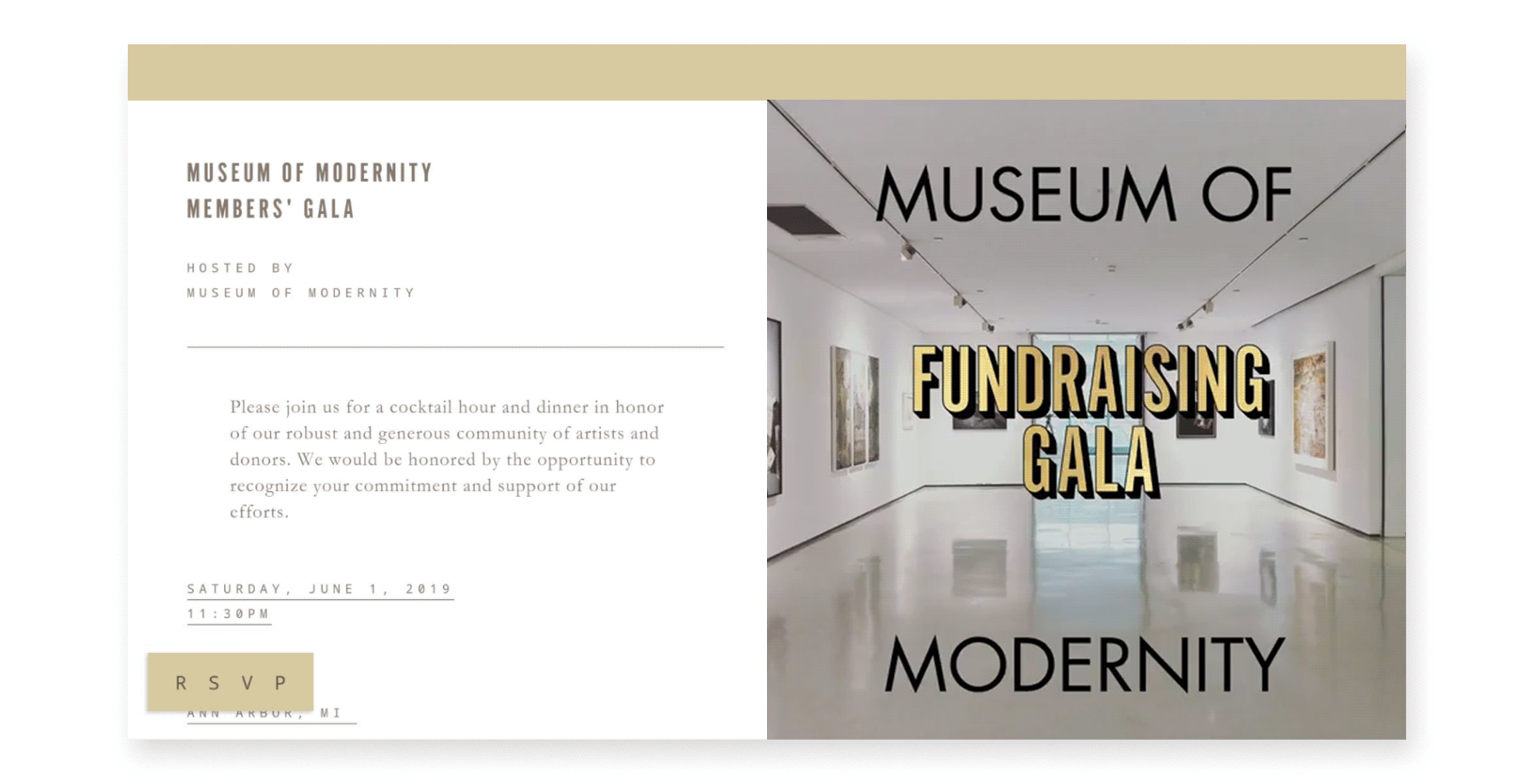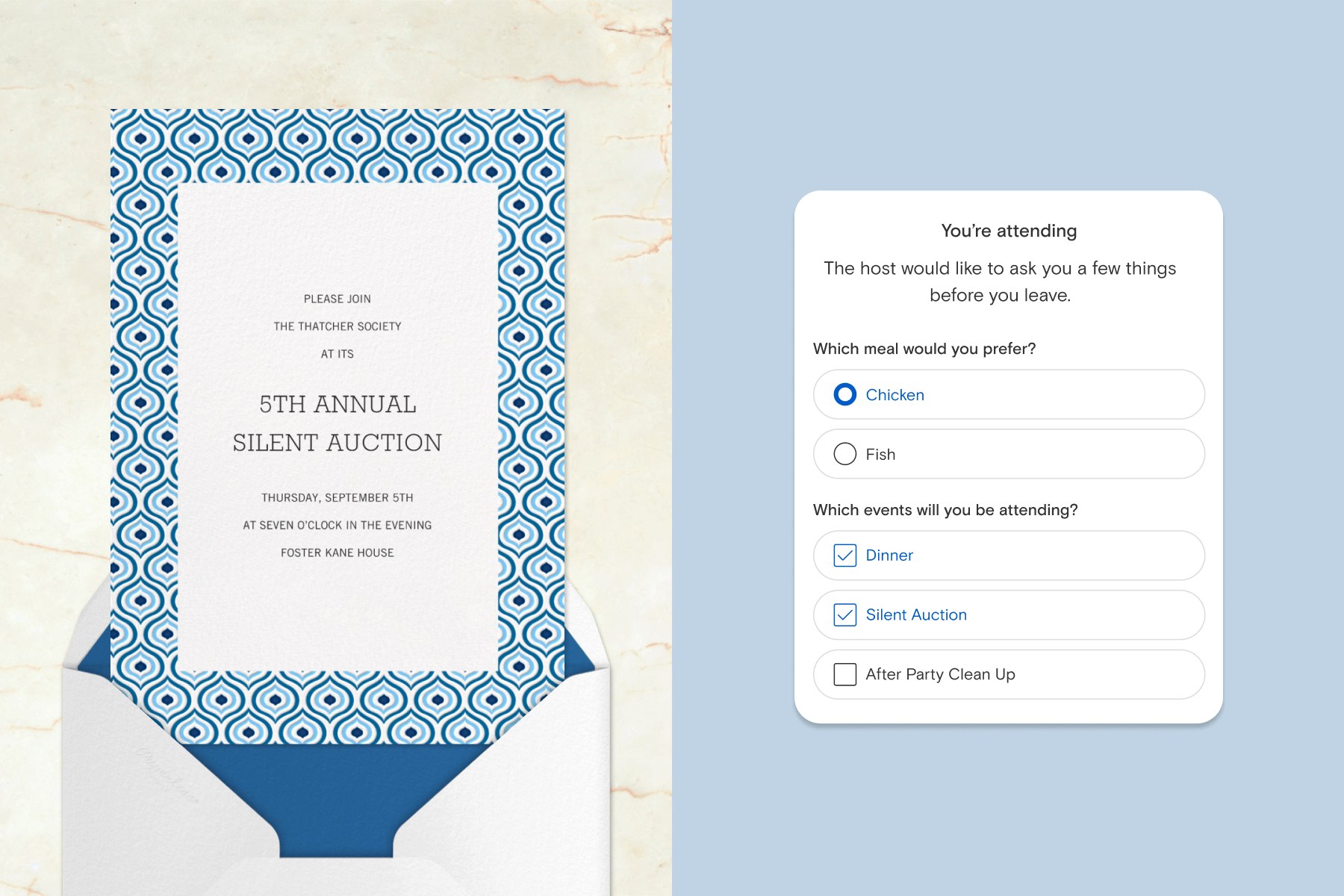How to start a fundraiser: a complete guide

Organizations of all sizes rely on fundraisers to raise money, spread awareness of their cause, and engage donors, clients, and the larger community. But a fundraiser event doesn’t have to be extravagant—or extravagantly expensive. Whatever your budget, you can pull off a successful event.
We talked to three fundraising experts about their tips and advice on choosing the right type of fundraiser, planning it, getting the word out with fundraiser invitations, and pulling it all off without a hitch. Read on to learn how to start a fundraiser for your organization.

Table of Contents
Types of fundraisers
There are scores of ways to raise funds. The best one for your organization depends on your culture, crowd, and community. No matter what type of fundraiser you put on, says Kara Hoover, marketing event director at Press Ganey | Forsta and volunteer for St. Jude Children’s Research Hospital, “An important idea to consider is ensuring there’s something for everyone at your fundraiser. Give your attendees options that fit within different budget levels so that everyone has a chance to participate.”
To that end, most fundraising event ideas lend themselves to incorporating extra activities that engage different age groups and interests and provide additional opportunities to raise even more money. For example, if you’re hosting an outdoor concert or sports tournament fundraiser, bring in food trucks that will welcome the business—and donate a portion of their proceeds to your cause. For a 5K or fun run, set up lawn-game mini-competitions at the finish line, and charge a small donation to participate.
Regular and silent auctions, raffles, and selling merchandise are popular ways to increase donations for nearly any event. For a school fundraising event, bring in a dunk tank, and let attendees pay for the chance to dunk the principal or everyone’s favorite teacher.
Here are just a few of the many types of fundraising events that nonprofit organizations, education institutions, and community groups can host to bring people together and raise money for a good cause.

Walks, runs, and competitions
Healthy competition can spark remarkable dividends for your fundraising, depending on the demographics of your circle or community. “For some organizations, a 5K run is a really good idea, because your network is filled with families with young kids. But that’s maybe not going to work for an organization that has a different demographic,” says Janine Repka Guzzone, Senior Development Manager at Crime Victims Treatment Center. “Being honest with yourself about what your community will respond to is key to a successful fundraiser.”
- Fun runs and walks: Fun runs and fun walks are a surefire way to get involvement from young families. Make it a walk-a-thon, bike-a-thon, or hike-a-thon, a color run, or a bubble run. Fun runs and walks can be held at a school, park, or even a parking lot.
- Races: 5Ks, 10Ks, and marathons can engage a lot of people in the community, bring in large donations, and raise awareness for your cause.
- Golf, bowling, or other sports tournament: Sports fans enjoy a good tournament, and these types of fundraising events can raise a lot of money and attract corporate sponsorships.
- Trivia competition: Everyone loves to show off their random knowledge, and trivia competitions can be a big draw. Participants pay to play, and the contest can involve donation pledges or corporate matches to increase the potential return.
Some of these types of events rely on peer-to-peer fundraising, where participants collect donation pledges from their own network, to be paid upon completion of the event. Others raise money from entrance fees, merch sales, and concessions. The obligatory free t-shirts you’ll definitely want to provide to the participants will help keep your organization on their radar long after the event is over, and it’s a great incentive for people to sign up.

Sales fundraisers
Selling items is a classic and eternally popular method of raising funds for a cause (Girl Scout cookies, anyone?). Community sales are a great way to get the attention of potential new donors and engage the community at large. Hold the event at an easy-to-access, high-visibility location to bring in as many potential shoppers as possible. Ideas for fundraiser sales events include:
- Bake sale
- Rummage sale
- Used book sale
- Holiday craft fair
- Car wash
- Retail ‘round up for a cause’ or restaurant ‘dine for charity’ partnerships

Benefit shows
Harness the creative talents in your community, and host a benefit concert, art auction, wine tasting, or fashion show. Ask local artists, musicians, and other creatives to contribute their talents to the event, either paid, at a discount, or as a donation. Sell tickets and concessions, hold a silent auction, and solicit donations during the event. These types of events for nonprofits are especially appealing if they involve celebrities, says Ms. Hoover. “Celebrities are an easy way to get a lot of attention, and a celebrity can be a noteworthy local, a media personality, or other individual of interest—you don’t have to secure an A-list entertainer.”
Crowdfunding
Crowdfunding through a platform like GoFundMe or Kickstarter is useful for charities that support individuals affected by an event—like a natural disaster—or a nonprofit that wants to quickly get a new initiative off the ground and has a large network. Since crowdfunding requires little effort to set up and maintain, it’s an ideal fundraiser for organizations that are boots-on-the-ground helping people or who have a small budget and few resources. Donors can give as much or as little as they wish, and you can offer special perks at different levels.
Online donation campaigns
Sometimes the best way to raise money is to take a direct approach. Send a compelling letter or email to your mailing list. Explain the need, make the pitch, and provide a link where they can donate online. Combine this funding drive with a social media campaign to raise awareness and capture new donors.

Galas
No organization is too small to hold a special fundraising gala to celebrate its accomplishments, engage with existing and potential donors, and solicit funding for important projects or causes. A gala can be as formal or casual as you like and can take the form of:
- Dinner and entertainment
- A themed dance party
- A black-tie cocktail party
- A costume ball
- An awards or recognition event
Curate your guest list to include a mix of current donors and people or organizations you’d like to collaborate with, says Ann Marie Elmayan, Director of Development for the nonprofit mentoring organization Spark the Journey. “Invite board members, representatives from corporate or foundation partners, people who support you via grants, your board member’s networks, your top donors, and your volunteers,” she recommends. “And if you work closely with other nonprofit partners, it’s a sign of good faith to invite them as well.”

8 steps for starting a fundraiser
Even if you’ve never planned a fundraiser event before, you can plan and execute a successful event if you’re organized, resourceful, and determined. The first step is to put together a planning committee composed of people who can help define goals, come up with ideas for events, and help plan and execute the fundraiser. Here’s how to get started.
Step 1: Identify your purpose and goals
According to Ms. Repka, having your internal team aligned on the goals for your fundraiser is key to its success. “The first question should be, what are you hoping to accomplish with this event? That could seem very obvious—‘we want to raise money.’ But nonprofits have fundraising events for many reasons—and yes, it could be to raise money, but it could also be to celebrate your community, engage new donors, and cultivate existing donors.”
Clear fundraising objectives help inform event planning, budget allocation, and expectations. It also helps you measure the success of the event based on your desired outcome later on.
Step 2: Set a budget
Create a comprehensive budget that considers costs like venue rentals, catering, permits, marketing, equipment rental, and other necessary expenses. “Stay realistic with regard to your budget, and stick to your event’s goals,” says Ms. Repka. “You always want to cover costs and have a little extra—I like to think of a 1:2 method. If you’re spending $50,000, you should aim to make at least $100,000 in donations.”
Still, set your expectations for returns in accordance with your budget and goals. “We’ll have a small dinner with our board where everyone brings one or two people they are hoping to add to the board or engage in a bigger way. We might not make up our costs, per se, but we will be able to bring more people in to contribute to the organization,” says Ms. Repka.
To offset some costs and maximize your budget, look for additional funding sources, like sponsorships, grants, and strategic partners willing to volunteer or provide in-kind donations.

Step 3: Decide on the type of fundraiser you’ll host
Based on your goals, budget, and target audience, choose the type of fundraiser you want to organize. Pick an event that will get the most action out of your donors—play to the strengths of your organization, members, and community. That could mean a 5K with peer-to-peer fundraising, an art show, and a raffle if you work with creative types or a bowling or mini golf tournament if your community is made up of families.
Step 4: Create a timeline and plan of action
Fundraisers take time to plan, and it’s crucial to start organizing well ahead of time. “However early you think you should start planning, back it up by four more weeks,” recommends Ms. Elmayan. “The last two months leading up to the fundraiser are going to be stressful no matter how much you plan, so just give yourself some grace in that space.”
If you’re working on a short timeline, an easy fundraiser, like an email campaign or rummage sale, is best. But for a gala or other large-scale event, says Ms. Elmayan, “It will typically take around six months to plan—but you can probably get away with four to five.”
She recommends taking into consideration what other nonprofits in your area are doing to hold similar events. “Think about what support typically looks like for those events, then consider what support you might need, whether it’s freelance communications or event planning services. What can you do in-house, and what do you need to outsource?”
Create a plan of action, and delegate tasks to your staff and volunteers—like researching locations and vendors, reaching out to potential corporate sponsors, obtaining permits, making reservations, sending invitations, and promoting the event. Ms. Elmayan recommends turning to the community and getting people involved to help pull off the event. “Who are your biggest champions in terms of helping you get donations, helping you get sponsorships, helping you get the right people in the room? Who are those people you can lean on during the event planning process?” Don’t be afraid to reach out and ask for what you need—chances are, you’ll find many hands willing to help.
Step 5: Determine the incentives
The best way to get people to RSVP to your gala invitation or hit the “submit” button on your donation page is to sweeten the deal for them with some kind of incentive to show up, like a raffle, giveaway, or door prize. It doesn’t have to cost a lot—you can solicit donations for gifts and integrate the incentives into the theme of your event, such as giving away free water bottles to the first 100 people who sign up for a race.
It’s also important to entice donors to give—even if they can’t make it to the event, says Ms. Repka. “Make a ticket available for those who can’t attend and would still like to donate. Make it fun, and give it a cute name that ties into the theme of the event. Or simply let them choose an option that reads, ‘I can’t make it, but please accept this donation in my place.’” If you’ve enabled donations on social networks, let people know they can also donate to your fundraiser event on Facebook or Instagram if they can’t come to the event.
Step 6: Create different ways to give
Ms. Hoover stresses the importance of offering donors different ways to give—and in various amounts. “You can have different levels of tickets for entry, you can have easy grabs, like baskets of stuffed animals for sale, or you can sell an event t-shirt.” Providing inexpensive options—like selling raffle tickets, low-priced merch, or auction items with a range of values—enables everyone to participate, even if they don’t have a lot to give.
It’s equally important to simplify and streamline the donation process, says Ms. Elmayan. “Make giving easy for donors. Make registration easy and automated, if you can—have it automatically link back to your CRM. Have a process for gift collection and processing after the event.”
Step 7: Promote your event
Planning a successful professional event relies on diligent promotion. Create a compelling story that’s at the heart of your campaign, whether you’re raising money for disaster victims, seeking program funding, or looking to raise awareness and attract partners or volunteers. Create promotional materials like physical and online Flyers, email campaign copy, and social media posts.
The more channels you use to promote your event, the more people you’ll reach. Older audiences may prefer mailed brochures or emailed invitations, while younger people are likely to see the event on social media. Other marketing options include:
- Radio
- TV commercials
- Email marketing
- An event website
- Flyers
- Press outreach
Paperless Post makes it easy to get the word out with online fundraiser invitations that you can send via text or email. Include customizable Blocks that appear below the invitation to highlight additional information about your event—like a schedule of activities, nearby parking, or speaker information. For a public event, create a shareable link to post on social media—and encourage your Instagram, Facebook, and Twitter followers to share the event invitation far and wide.

Step 8: Share the good news—and give thanks
You’ve made it through the hard part: planning and hosting the event. Now you can focus on the road ahead, which begins with thanking those who provided you with money and support. Donors want to know their money has made an impact, so use the same channels you promoted the event with to announce the amount of money donated—and how you will use it.
It’s also essential to express appreciation for the contributions of others—donors, participants, volunteers, your community, vendors, corporate sponsors, and invaluable team members. Send an email or online thank you card. For very generous donors, an appreciative phone call is in order.
“Make sure you send acknowledgments in a timely manner—no later than one week after the fundraiser,” recommends Ms. Elmayan. Make it personal when needed, depending on your relationship with the donor. “Getting a standard acknowledgment is nice, but it’s not personal. Giving it that personal touch will go a long way.”
Ms. Repka agrees. “You can even use your follow-up materials to do a last call for donations.”
What to do after completing a fundraising campaign
Once the event is in the books, the money is in the bank, and the donors have been thanked, take time to evaluate the outcome of your fundraiser and make notes of what you might like to do differently next time. Ask yourself:
- Did we meet our goals?
- Did we stay within budget?
- Which donation strategies worked best and worst?
- What went smoothly, and what didn’t?
- What could we do differently next time to make it even better?
If the type of fundraiser you chose didn’t produce the results you’d hoped for, choose a new type next time, and continue to engage your community in your mission.
Get the word out with Paperless Pro
A fundraiser can be as simple or elaborate, and as big or small as the time, resources, and budget you have available. Paperless Pro offers an affordable way to send a handful or an entire spreadsheet’s worth of online invitations to potential donors. Whether you want to send sophisticated invitations for a charity cocktail party or you’re looking for fun and festive Flyer invitations for an epic bake sale or benefit concert, our huge selection of customizable invitations makes it easy to find just the right one.
Once you hit send, use our event management tools to see who’s opened them, track RSVPs, communicate with invitees via our guest messaging tool, and use Guest Tags to group and organize them to help you create name tags or a seating chart for your event. With Paperless Pro, you can also view advanced Analytics related to your RSVPs to help you better visualize your event details. And when it’s all done and over with, you can send donor appreciation Cards to let your guests know how much you appreciate their support.
Find sophisticated, business-minded designs that streamline planning and impress guests.

Hero image courtesy of Ann Marie Elmayan and Spark the Journey.



